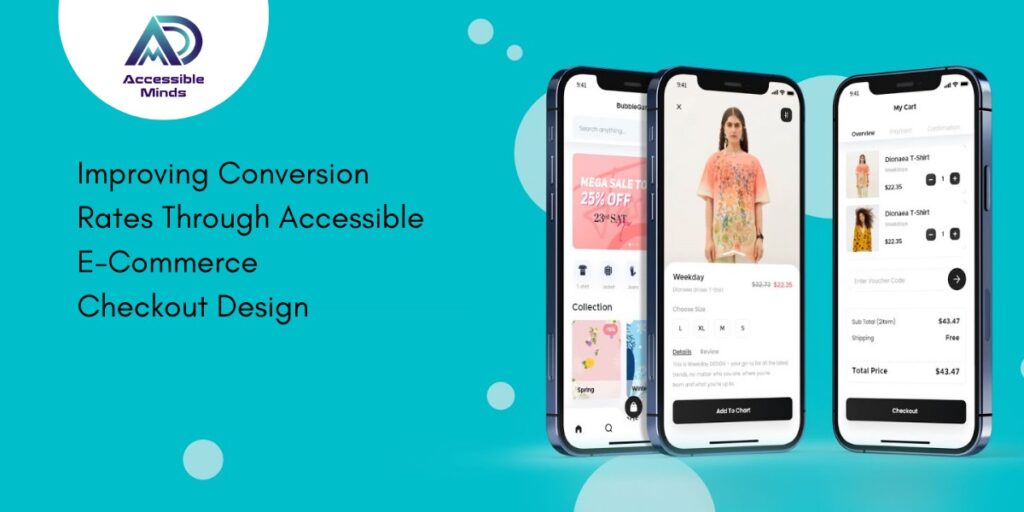Introduction
For modern e-commerce businesses, checkout design is one of the most critical determinants of conversion rates. While companies invest heavily in marketing and user acquisition, many overlook the accessibility of their checkout process. According to industry research, nearly 20% of the global population lives with some form of disability, and inaccessible checkout flows create significant friction for these users. This case study explores how an online retail brand improved its conversion rate by redesigning its checkout system with accessibility at its core, supported by professional Accessibility Testing Services.
The Challenge
The brand, a mid-sized online fashion retailer, noticed that while traffic to their site had grown steadily, the checkout abandonment rate was unusually high—over 70%. User feedback suggested frustrations with complex forms, unresponsive buttons, and lack of screen reader support.
Key issues identified included:
- Form fields without proper labels, making it difficult for visually impaired users.
- Low color contrast between text and background, impacting readability.
- Inconsistent keyboard navigation for users unable to use a mouse.
- Error messages displayed only visually, without assistive technology alerts.
These barriers not only excluded a significant segment of users but also had a measurable impact on revenue and brand reputation.
The Approach
The company partnered with a digital accessibility consultancy to conduct an audit using Accessibility Testing Services. The approach involved three key phases:
- Accessibility Audit
The first step was a comprehensive accessibility audit, aligned with WCAG 2.2 guidelines. Both automated tools and manual testing were performed. Screen readers (JAWS, NVDA) and keyboard-only navigation scenarios were used to simulate real-world experiences. - Redesign & Development
Based on audit findings, the checkout flow was redesigned:
- Form fields were given descriptive labels and ARIA attributes.
- High-contrast themes were applied to ensure text clarity.
- Focus indicators were standardized for better keyboard navigation.
- Error messages were designed to be accessible, providing both visual cues and screen reader alerts.
- Form fields were given descriptive labels and ARIA attributes.
The design team worked closely with accessibility specialists to ensure compliance and usability.
- Validation with Accessibility Testing Services
After implementation, a second round of testing was performed. Accessibility Testing Services validated that all user interactions, from cart review to payment confirmation, were seamless across assistive technologies. Additionally, usability testing was conducted with a group of participants with varying accessibility needs, ensuring that improvements worked in practice.
The Results
The results were significant and measurable within three months of implementation:
- Conversion Rate Increase: Checkout completion rates rose by 22%.
- Reduced Abandonment: Cart abandonment decreased from 70% to 52%.
- Improved User Satisfaction: Customer surveys showed a 30% increase in satisfaction among users with accessibility needs.
- Compliance Confidence: The business achieved WCAG 2.1 AA compliance, reducing potential legal and reputational risks.
Beyond quantitative metrics, the qualitative feedback was equally valuable. Users praised the smoother experience, while the brand positioned itself as more inclusive and customer-focused.
Key Takeaways
- Accessibility Drives Business Results
Accessibility is not just about compliance—it directly impacts conversions, loyalty, and revenue. - Accessibility Testing Services are Essential
Automated tools can detect basic issues, but expert-led Accessibility Testing Services uncover deeper usability gaps, ensuring a truly inclusive experience. - Design with Empathy, Validate with Testing
Involving real users with accessibility needs in testing ensures that improvements are not just theoretical but practical.
Conclusion
By integrating accessibility into its checkout process, this e-commerce retailer not only improved inclusivity but also unlocked higher conversion rates and customer trust. The success underscores a crucial point: accessible design benefits everyone, not just users with disabilities. With the support of professional Accessibility Testing Services, businesses can transform potential friction points into opportunities for growth.
As digital commerce becomes increasingly competitive, organizations that invest in accessible design will stand out—not only as leaders in innovation but also as champions of customer-centric values.

